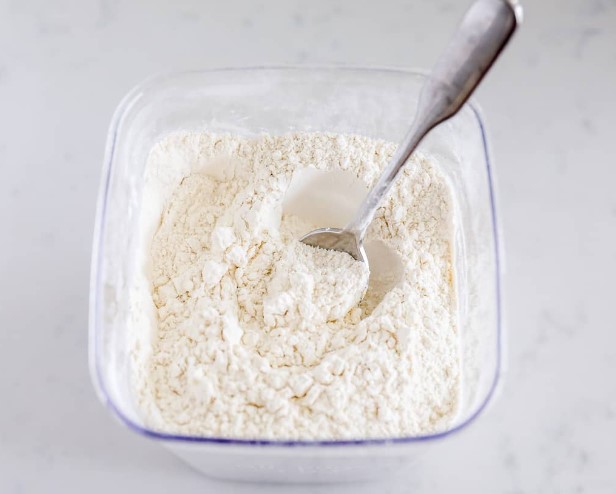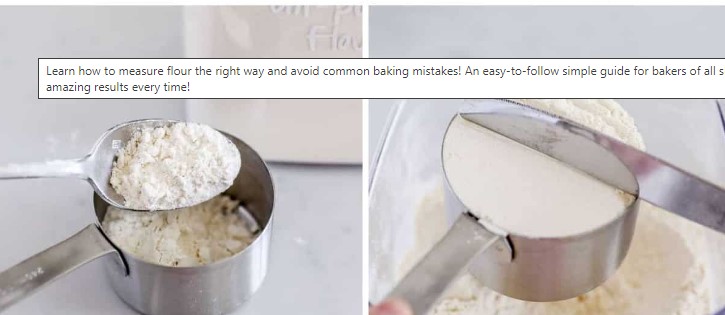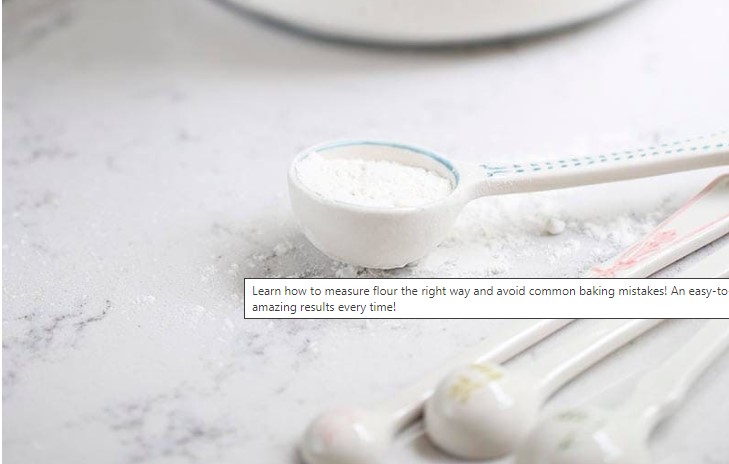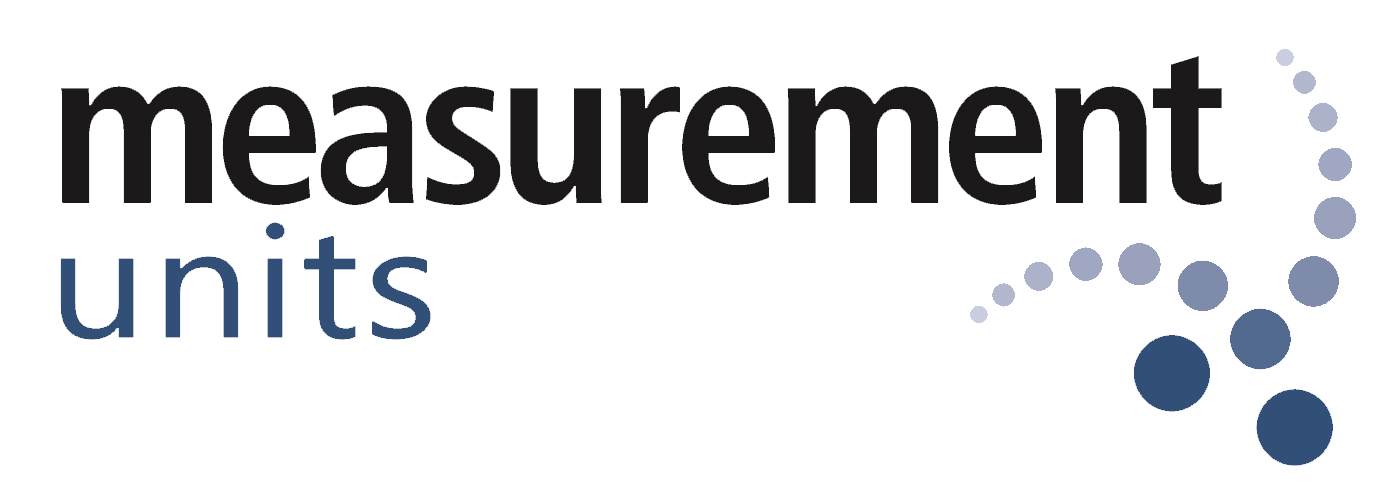Baking is a science, and precise measurements play a crucial role in achieving consistent and delicious results. While many recipes call for ingredients to be measured by weight, not everyone has a kitchen scale readily available. However, fear not!
Flour density refers to the weight of flour per unit volume. Different types of flour have different densities, which can affect how they are measured. For example, all-purpose flour is denser than cake flour, meaning that a cup of all-purpose flour will weigh more than a cup of cake flour. This is why measuring by weight (grams) is more accurate than measuring by volume (cups), especially in baking where precision is key.
In this guide, we’ll explore several methods for accurately measuring 100g of flour without scales, specifically tailored for bakers in the UK.
Methods for Measuring 100g Flour
Method 1: Spoon and Level Technique
The spoon and level technique is a simple yet effective way to measure flour without scales.
- Using a spoon, gently scoop flour from the bag or container and heap it into the measuring cup.
- Once the cup is overflowing with flour, use the back of a knife or straight edge to level off the excess flour, ensuring a precise measurement.
- Repeat this process until you have filled the measuring cup to the required level for 100g of flour.
- It’s important not to pack the flour down into the cup, as this can result in an inaccurate measurement. Instead, allow the flour to naturally settle into the cup.

Image source: iheartnaptime
Method 2: Cup Conversion
If you have a recipe that calls for flour to be measured in cups but you need to convert it to grams, you can use standard conversions to achieve the desired weight.
- One cup of all-purpose flour typically weighs around 120-130 grams. To measure 100g of flour, you’ll need to adjust the cup measurement accordingly.
- Start by measuring out a slightly scant cup of flour using the spoon and level technique described above.
- Next, remove a portion of the flour until you reach the desired weight of 100g. You can do this by gently scooping out small amounts of flour with a spoon until you achieve the correct weight.

Image source: iheartnaptime
Method 3: Using Common Household Objects
If you don’t have measuring cups or spoons available, you can use common household objects to estimate the amount of flour needed.
- Look for items such as water bottles, coffee mugs, or jars that have a known volume.
- Once you’ve identified a suitable container, fill it with flour to the desired level, keeping in mind that you may need to adjust the amount slightly based on the size and shape of the container.
- While this method may not be as precise as using measuring cups or scales, it can still provide a reasonable approximation of the required flour measurement.

Image source: iheartnaptimeHow many spoons is 100g of flour?
Testing Accuracy
While the methods outlined above can provide reliable measurements, it’s always a good idea to test the accuracy of your measurements, especially when using alternative methods.
Importance of Testing Accuracy
Testing the accuracy of your measurements ensures that you’re achieving consistent results in your baking.
How to Verify Accuracy
One way to verify the accuracy of your measurements is to use a kitchen scale, if available. Simply weigh the flour using the scale and compare it to the desired weight of 100g. If there’s a significant difference, you may need to adjust your measuring technique accordingly.
Tips and Considerations
Achieving accurate measurements without scales may take some practice, but with the following tips and considerations, you’ll be well on your way to mastering the art of flour measurement:
Consistency in Measuring Techniques
Consistency is key when it comes to measuring ingredients in baking. Try to use the same measuring technique each time you bake to ensure consistent results.
Adjusting Recipes
When converting recipes from cups to grams or vice versa, it’s important to adjust the other ingredients accordingly to maintain the proper ratio of ingredients.
Factors Affecting Flour Measurements
Several factors can affect flour measurements, including humidity, compaction, and how the flour is stored. Be mindful of these factors and adjust your measurements accordingly.
Conclusion
Accurately measuring flour is essential for successful baking, but it doesn’t always require a kitchen scale. By using the methods outlined in this guide, you can confidently measure 100g of flour without scales, ensuring delicious results every time you bake. So go ahead, roll up your sleeves, and let the baking adventures begin!
Briefly acknowledge that using a scale is always the most accurate method. Suggest alternative solutions if the recipe requires a very precise amount (e.g., online conversion tools, contacting the recipe creator). Thank the reader for their interest
Frequently Asked Questions (FAQs)
To measure 100g of flour with spoons, you’ll need approximately 7 to 8 level tablespoons. Remember to spoon the flour into the tablespoon gently and level it off with a straight edge for accuracy.
Without a scale, you can use the spoon and level method. Take a slightly heaped cup of flour, then remove a bit until it weighs around 100 grams. Alternatively, familiarize yourself with common household objects’ volumes to estimate flour amounts.
100 grams of flour is roughly equivalent to about 3/4 cup plus 2 tablespoons. However, this can vary slightly depending on the flour’s density and how it’s measured.
If using a standard-sized mug, 100g of flour is approximately 3/4 of a mug. However, the exact amount can vary depending on the mug’s size and shape. It’s best to fill the mug to the desired level, ensuring it’s consistent each time you measure.
